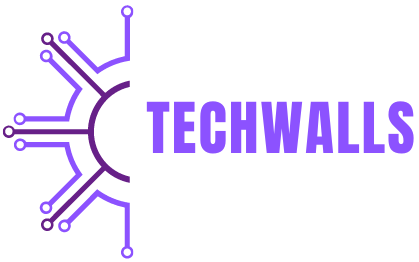TeenLeak refers to the unauthorized distribution of private information, including photos and personal details, often among teenagers. One significant issue that has recently gained attention is TeenLeak, a term associated with the unauthorized sharing of private information and images among teenagers. This article delves into what TeenLeak entails, the risks involved, and the measures that can be taken to protect personal information online.
What is TeenLeak? Unpacking the Phenomenon
TeenLeak refers to the unauthorized distribution of private information, including photos and personal details, often among teenagers. This can occur through various channels, such as social media platforms, messaging apps, or online forums. The term typically involves instances where intimate or sensitive content is shared without the consent of the individual featured, leading to serious privacy breaches and emotional distress.
The Risks of TeenLeak: Privacy and Emotional Impact
The risks associated with TeenLeak are substantial and multifaceted. On a personal level, the emotional impact can be severe. Victims often experience feelings of embarrassment, shame, and anxiety, which can lead to long-term psychological effects. The social consequences are equally troubling; individuals may face bullying, harassment, or social ostracism as a result of their private information being exposed.
Moreover, TeenLeak can have legal ramifications. Depending on the nature of the content shared and the jurisdiction, the unauthorized distribution of private images can be considered a criminal offense. This legal risk underscores the importance of understanding the gravity of sharing personal information online.
Understanding the Technology: How TeenLeak Happens
TeenLeak occurs through a variety of technological means, facilitated by the widespread use of digital communication tools. Social media platforms, messaging apps, and online communities provide spaces where information can be shared rapidly and widely. In many cases, once content is uploaded, it becomes difficult to control its distribution or remove it from the internet.
A common method is through the misuse of social media and messaging apps, where individuals might share content with trusted friends who, in turn, may distribute it further. Additionally, the lack of stringent privacy settings on some platforms can make it easier for unauthorized parties to access and share private content.
Preventative Measures: Safeguarding Digital Privacy
To combat the risks associated with TeenLeak, it is crucial to adopt preventative measures. Educating teenagers about digital privacy is a fundamental step. Awareness programs should focus on the importance of safeguarding personal information and understanding the potential consequences of sharing sensitive content.
Setting strict privacy settings on social media accounts is another effective measure. By limiting who can view and share their posts, individuals can better control the dissemination of their information. Encouraging the use of strong, unique passwords and enabling two-factor authentication can also help protect accounts from unauthorized access.
Legal Protections and Resources: Seeking Help
In cases where TeenLeak occurs, knowing where to turn for help is essential. Many jurisdictions have laws in place to address the unauthorized distribution of intimate images, and victims may have legal recourse to seek justice. Organizations and hotlines specializing in digital safety can provide support and resources for individuals affected by privacy breaches.
Reporting the incident to the relevant platforms is also an important step. Most social media networks and messaging apps have mechanisms for reporting inappropriate content and can assist in removing unauthorized images or information. Additionally, consulting with legal professionals who specialize in digital privacy can provide guidance on how to navigate the situation.
Fostering a Culture of Respect: Encouraging Responsible Online Behavior
Promoting a culture of respect and responsibility online is crucial in preventing incidents of TeenLeak. Schools, parents, and communities should work together to foster an environment where digital behavior is guided by respect for others’ privacy. Open conversations about the ethical implications of sharing personal information can help instill a sense of responsibility among teenagers.
Educational programs and workshops can play a significant role in this effort. By addressing topics such as cyberbullying, digital footprints, and the impact of online actions, these programs can empower individuals to make informed and respectful decisions about their digital presence.
The Role of Social Media Platforms: Implementing Effective Policies
Social media platforms have a critical role to play in addressing the issue of TeenLeak. Implementing robust privacy policies and providing clear guidelines on acceptable content are essential for creating a safer online environment. Platforms should also invest in technologies that can detect and prevent the unauthorized sharing of private information.
Regular updates to privacy settings and user controls can help users better manage their digital footprint. Additionally, platforms should offer support and resources for individuals who have been affected by privacy breaches, including options for reporting and removing harmful content.
Future Outlook: Evolving Digital Privacy Challenges
As technology continues to advance, new challenges related to digital privacy are likely to emerge. The rise of new social media platforms, messaging apps, and digital tools will bring additional considerations for protecting personal information. Staying informed about these developments and adapting to new privacy risks will be crucial in maintaining online safety.
Ongoing research and dialogue about digital privacy will contribute to developing more effective strategies for preventing and addressing issues like TeenLeak. Collaboration between technology companies, educators, policymakers, and individuals will be key to creating a safer and more respectful online environment.
Conclusion:
TeenLeak highlights the significant risks associated with the unauthorized sharing of private information among teenagers. Understanding the phenomenon, adopting preventative measures, and fostering a culture of respect are essential steps in mitigating these risks. By staying informed and proactive, individuals and communities can work together to protect digital privacy and ensure a safer online experience for everyone.
As the digital landscape continues to evolve, remaining vigilant and adaptable will be vital in addressing emerging privacy challenges. Through education, legal protections, and responsible online behavior, we can navigate the complexities of digital privacy and safeguard personal information in an increasingly connected world.











